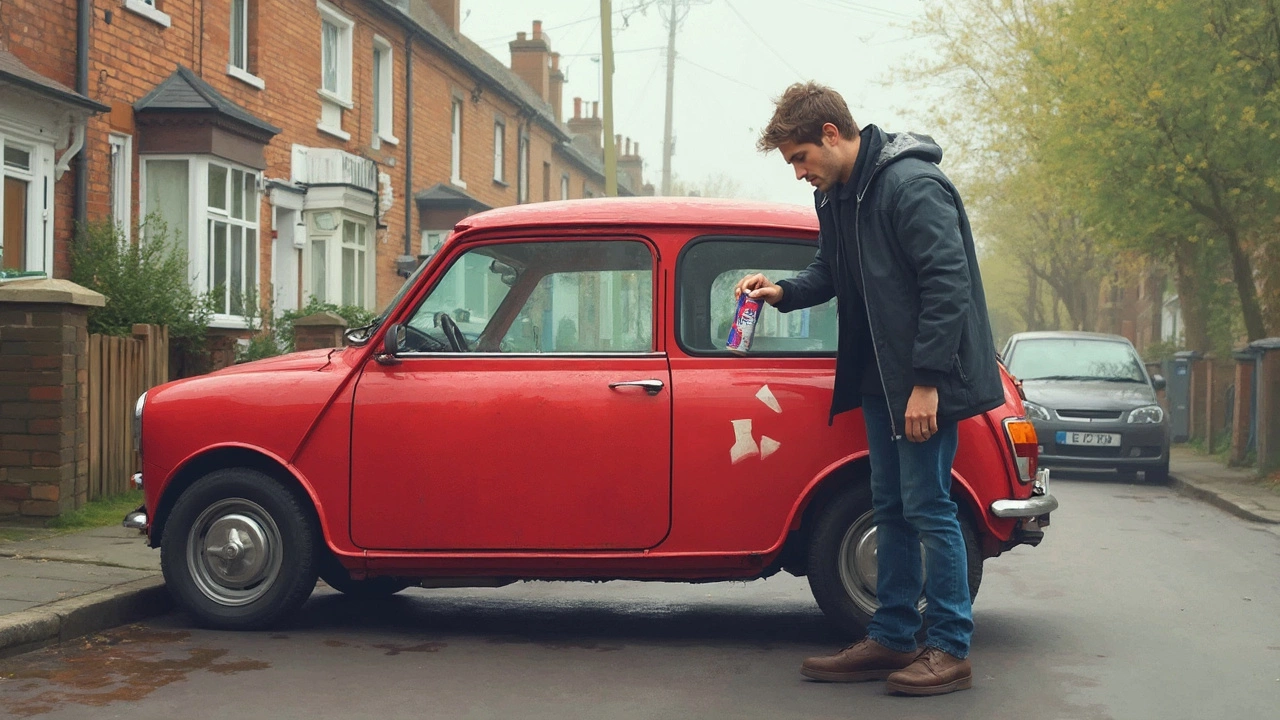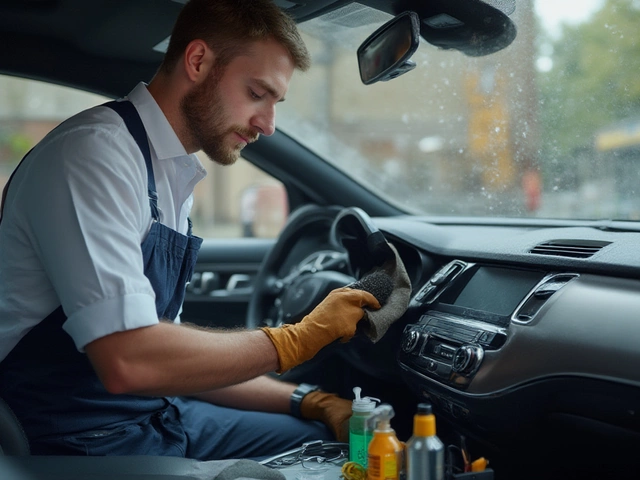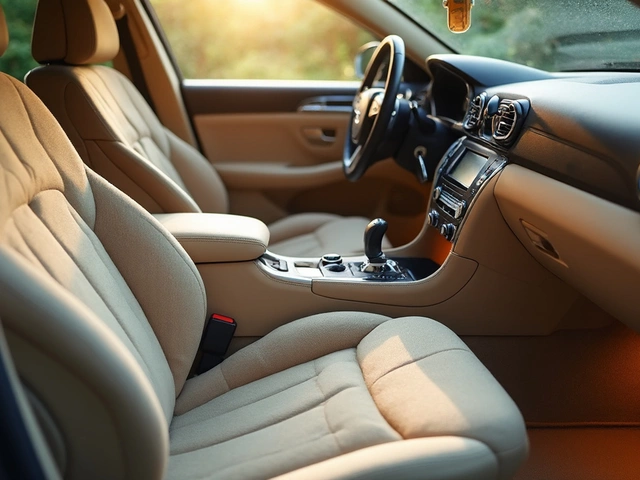Ever found an annoying scuff or scratch on your car and thought, “Maybe WD-40 will fix it”? You’re definitely not alone. People use WD-40 for all sorts of stuff—door hinges, rusty bolts, squeaky bikes—so it’s no wonder it ends up in garage fixes for car scratches.
Here’s the thing: WD-40 isn’t actually a scratch remover. But, it can make light surface scratches look a lot less obvious for a while. It does this by getting into the tiny grooves and blending the edges, which tricks your eyes. The scratch is still there, but with a coat of WD-40, it just doesn’t shout for attention anymore.
If you’re looking for a miracle product that wipes away every scratch for good, you’ll be disappointed. But if you want a fast hack before your friends come over or need a quick photo without obvious marks, WD-40 can do the trick. Just remember—there are right and wrong ways to use it, and it won’t work on deep scratches where you can see the metal or primer.
- What Is WD-40 Actually Made For?
- How WD-40 Reacts with Car Paint
- What Scratches Can WD-40 Hide (and Which Ones It Can’t)
- Simple Step-by-Step: Using WD-40 for Scratches
- Better Alternatives for Real Repairs
What Is WD-40 Actually Made For?
When most people think about WD-40, fixing car scratches might not be the first thing that comes to mind. This spray was never meant for paint jobs or bodywork. Back in 1953, WD-40 was invented by a small group of guys working at the Rocket Chemical Company in San Diego. The name stands for "Water Displacement, 40th formula" because it was the 40th attempt to get the mixture right. It was originally made to stop rust and moisture in aerospace and military industries, not for shining up cars.
WD-40 is a mix of lubricants, anti-corrosion agents, and a petroleum-based solvent. Here’s a quick breakdown of what it actually does:
- Loosens stuck parts like rusty bolts
- Stops squeaks and silences hinges
- Drives out moisture from places prone to rust (think: electrical systems, bike chains)
- Cleans off grime, adhesive residue, and some sticky messes
It got popular in garages everywhere because it's cheap, easy to use, and works on hundreds of things unrelated to its original purpose. Even NASA used it on the outer skin of their Atlas rocket to protect it from rust and corrosion before launch. It’s one of those products that started as a specialty tool and turned into an all-purpose go-to for DIY jobs.
Here’s a simple table showing what WD-40 is usually used for:
| Common Use | Purpose |
|---|---|
| Rust Prevention | Blocks moisture and prevents corrosion on metal surfaces |
| Lubrication | Stops squeaks in hinges, wheels, and moving parts |
| Penetrating Oil | Loosens rusty or stuck bolts and screws |
| Water Displacement | Dries out ignition systems, tools, and machinery |
| Cleaning | Removes sticky residue, grease, and some grime |
While you’ll see tons of hacks online—like using WD-40 on everything from headlights to boots—it’s really a water-displacer and lubricant at its core. That means it’s great for short-term fixes, but you shouldn’t think of it as a long-lasting car scratch remover.
How WD-40 Reacts with Car Paint
Here’s where things get interesting. WD-40 isn’t made to fix paint, but it does interact with car paint in a weirdly useful way. The main thing to know: it doesn’t actually erase scratches. Instead, it fills in tiny grooves and lifts the shine on the surface, making light scratches or scuffs nearly disappear—at least until you wash your car again.
WD-40 is mostly a mix of mineral oils, petroleum-based ingredients, and a little solvent. It won’t eat through your clear coat or paint unless you use buckets of it for weeks straight. For most quick uses, your paint stays safe. But it can leave behind an oily layer that messes with the paint’s natural shine if you don’t wash it off in a few days. So, think of this stuff as a short-term fix, not a cure for old, deep scratches.
The WD-40 brand itself points out that their product is safe for most car paints as long as you don’t let it sit forever. They say it’s fine for cleaning off road tar, bugs, bird poop, and light marks. Still, you should always wipe any extra WD-40 off your paint after a few hours so it doesn’t start grabbing dust or making your car look greasy.
| Test Condition | Effect on Paint | Notes |
|---|---|---|
| Quick spray, wipe in 5 mins | No harm, hides surface marks | Perfect for small touch-ups |
| Left on for 24 hours | No paint damage, oily residue | Will collect dust, needs washing |
| Daily use for weeks | Possible clear coat dulling | Not recommended |
The bottom line—WD-40 will not melt your paint, but you can’t use it in place of a real scratch remover. For anything deeper than a surface rub, it’s just not enough. If you only need to hide a scratch for a weekend or before a photo, though, it does the job just fine. Always follow up with soap and water so your paint keeps looking sharp.
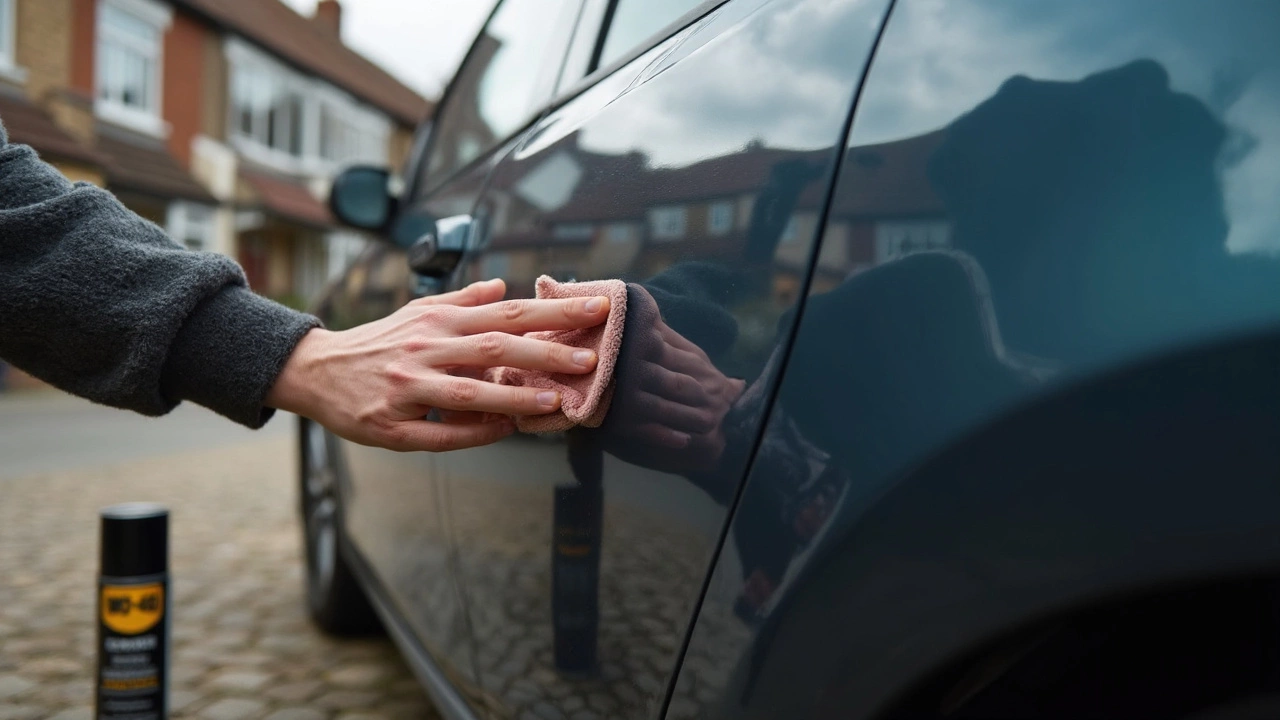
What Scratches Can WD-40 Hide (and Which Ones It Can’t)
When it comes to hiding scratches, WD-40 isn’t magic, but it’s handy for certain marks. Basically, it works best on surface-level scratches—these are the kind where you only notice a change in the clear coat, not actual gouges or deep lines. If you run your fingernail over the scratch and it barely catches, that’s a good sign WD-40 can help.
Here’s why this works: WD-40 is a water-displacing spray, so when you spray it on, it fills tiny grooves and helps reflect light differently. That makes these fine scratches almost disappear, at least for a while. Think of it as putting chapstick on chapped lips—the damage is still there, but it looks smoother.
The limits? Any real damage that cuts through the base paint or goes down to the metal or plastic won’t get fixed, no matter how much you spray. These deeper scratches still show up, and sometimes WD-40 even makes them stand out more by adding shine around the damaged spot.
- Works best on scuffs, swirl marks, tiny paint rubs, and light surface scratches
- Won’t fix deep scratches, chips, or any damage where you see primer or metal
- Only offers a temporary “hidden” effect—the scratch returns if you wash off the spray
If you’ve ever seen detailers use a WD-40 trick before a sale or show, it’s because it gives cars a quick facelift, not a real fix. Want something that actually repairs the damage? You’ll need touch-up paint, scratch repair kits, or a trip to the body shop.
Simple Step-by-Step: Using WD-40 for Scratches
When you’re dealing with small marks or light scratches on your car, using WD-40 is a quick fix a lot of people swear by. Let’s get into exactly how you use it, what to expect, and a few tips so you don’t mess up your paint job.
- Clean the Area: Make sure the scratch and the area around it are clean. Dirt or grit can make scratches worse if you rub it in. Use mild car soap and water, then let it dry fully.
- Shake It Up: Grab your can of WD-40 and shake it. This helps the spray work evenly.
- Spray Lightly: Spray a small amount of WD-40 directly onto the scratched area. Don’t drown the spot—a thin layer is plenty.
- Wait a Moment: Give it a minute or so to settle into the scratch. Don’t rush it.
- Buff Gently: Use a soft, clean microfiber cloth to gently rub the area in circles. Press lightly. You just want to blend the edges of the scratch, not grind it in.
- Wipe Extra Off: Take another clean part of your cloth and wipe away any extra WD-40 so it doesn’t leave a greasy film.
- Check Your Work: Step back and look at the scratch from different angles. If it’s still obvious, you can try a second light application. WD-40 might mask it better the second time around.
This trick works because WD-40 is packed with oils that fill in those tiny grooves and help reflect light more evenly over the area. But don’t get too excited—if you run your fingernail across the scratch and feel a dip, WD-40 won’t make it disappear. It hides surface-level marks best.
Here’s a quick look at what you can expect with this method:
| Scratch Type | Result with WD-40 | How Long It Lasts |
|---|---|---|
| Light, surface scratches | Much less visible, often blends into paint | Lasts until WD-40 wears off (a couple washes or rain) |
| Medium (not through paint) | Can help, but scratch may still show from certain angles | Temporary (same as above) |
| Deep scratches (to primer/metal) | WD-40 won't help; scratch still obvious | Not effective |
One more tip: Don’t use WD-40 before using any real scratch remover product. WD-40 can leave a residue that makes those products less effective. Wipe the area clean with rubbing alcohol before using proper repair kits.
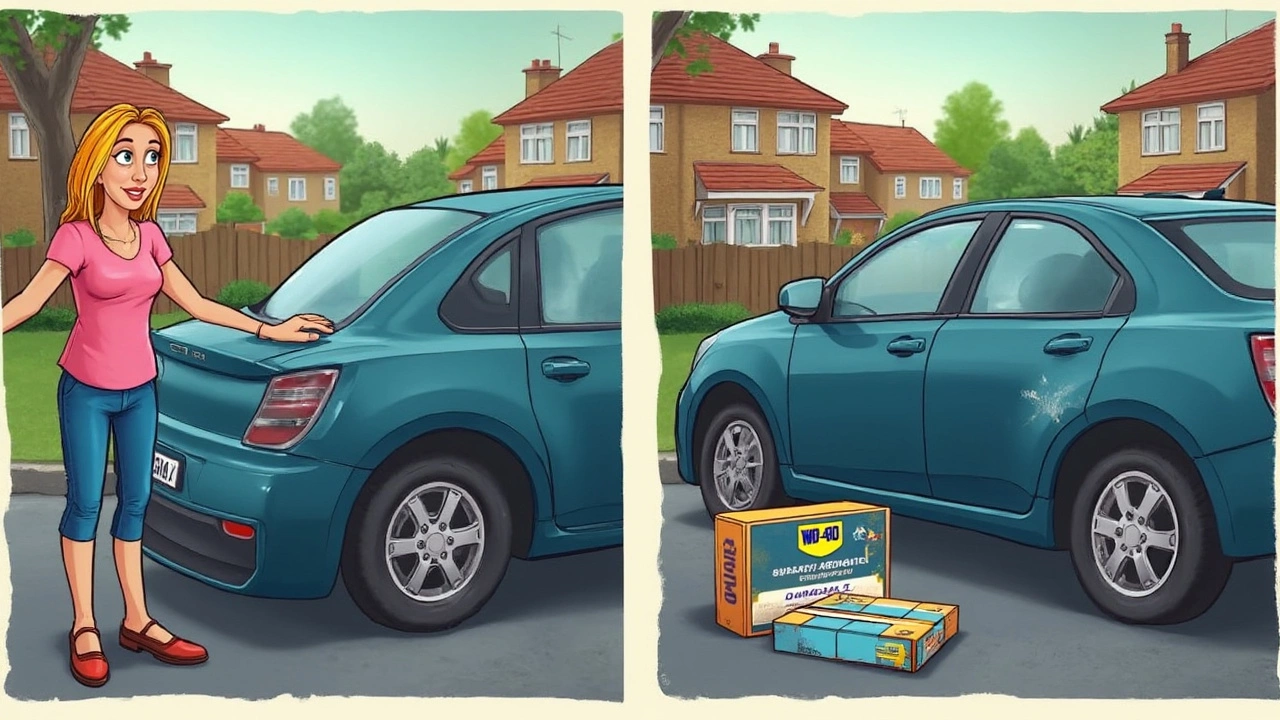
Better Alternatives for Real Repairs
If you want to actually fix car scratches instead of just hiding them, there are way better options than WD-40. Car scratches come in different depths, and the right fix depends on how bad it is. Here’s what really works in the detailing world.
For light scratches that don’t catch your fingernail, a scratch repair pen or compound works wonders. Scratch removers, like Meguiar’s ScratchX or Turtle Wax Scratch Repair, use tiny abrasives to smooth out the paint surface. You just rub it on, let it haze up, and then buff it off. These products are safe for clear coats and actually blend scratches in, not just cover them up.
Deeper scratches—where you see primer or metal—need a touch-up paint kit. You can get these color-matched for your exact car paint code. It’s usually a three-step process: clean the area, dab on a tiny bit of paint (use a toothpick for better control!), and then set it with a clear coat. Once it’s dry, you can gently sand and polish the area for a smoother finish.
If the damage is big or you have no idea what you’re doing, professional paint repair is your safest bet. Shops have the right tools, paints, and know-how to make bad scratches vanish. It might cost more up front, but you're saving yourself from a potential DIY disaster or a weird paint mismatch.
- For minor scratches, go for quality scratch removers from trusted brands.
- If you can see metal or deeper layers, use touch-up paint—and follow instructions closely.
- For best results or big areas, let a pro handle it to match your paint and finish.
And one last tip? Always wash and dry the area before messing with repairs. Dirt just makes scratches worse. Giving your car some TLC with a real fix keeps it looking sharp and might even boost resale value down the road.

